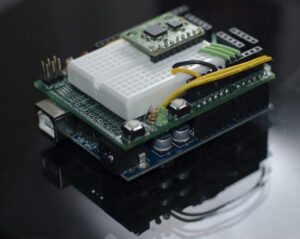 Fiber optic inclinometer is considered to be one of the most important optical fiber devices used in numerous fields of application. For example, in geophysical engineering, the inclinometer based on the fiber Bragg grating technology (FBG) allows monitoring the angle of inclination at regular intervals along the borehole to profile the land displacement.
Fiber optic inclinometer is considered to be one of the most important optical fiber devices used in numerous fields of application. For example, in geophysical engineering, the inclinometer based on the fiber Bragg grating technology (FBG) allows monitoring the angle of inclination at regular intervals along the borehole to profile the land displacement.
Current fiber optic inclinometers utilizing FBG sensors demonstrate a high level of sensitivity and angle of measurement resolution of 0.006°. It should be noted that traditional inclinometers have disadvantages when it comes to their involuntary twist during the process of installation. And optical fiber sensors were widely thought to overcome these limitations due to the absence of moving parts.
Nevertheless, the combination of traditional inclinometers with FBG technology enables us to resolve the challenge and make the fiber optic inclinometers’ operation independent of twisting, therefore, the precision remains constant. Moreover, despite numerous fiber optic techniques that measure temperature, strain, pressure, and other parameters, new fiber optic inclinometer based on a fiber’s taper and a long-period fiber Bragg grating have been recently developed.
The principle of the fiber optic device is based on the use of conventional fiber Mach-Zehnder interferometer that allows dividing the incoming light between two optical fibers and recombining it at a second junction. To be precise, in a Mach-Zehnder system, a long-period fiber Bragg grating dissipates light at its resonant wavelength from the optical fiber core into the cladding, while a second-long period FBG takes light from the cladding back into the fiber core.
The novel fiber optic inclinometer is a simpler device that includes only a single long-period fiber Bragg grating. Moreover, it uses the taper that enables to increase the core field so that part of its light is coupled into the cladding. The fiber optic inclinometer offers the following advantages in its operation:
- the immunity to electromagnetic interference;
- the high sensitivity;
- the compact size;
- the multiplexing and remote interrogation abilities.
This optical fiber device based on the interferometer was tested in the measurement of angular displacement. During the experiment, the optical fiber on either side of the taper was sheathed in capillary tubes and then twisted accurately at the taper. Thus, such a bend influences the fringe visibility, but not the location of the fringes.
Optromix is a FBG sensor manufacturer that provides top of the line FBG sensing systems suitable for monitoring of the constructions’ inclination. If you have any questions or would like to buy a FBG product, please contact us at info@optromix.com

